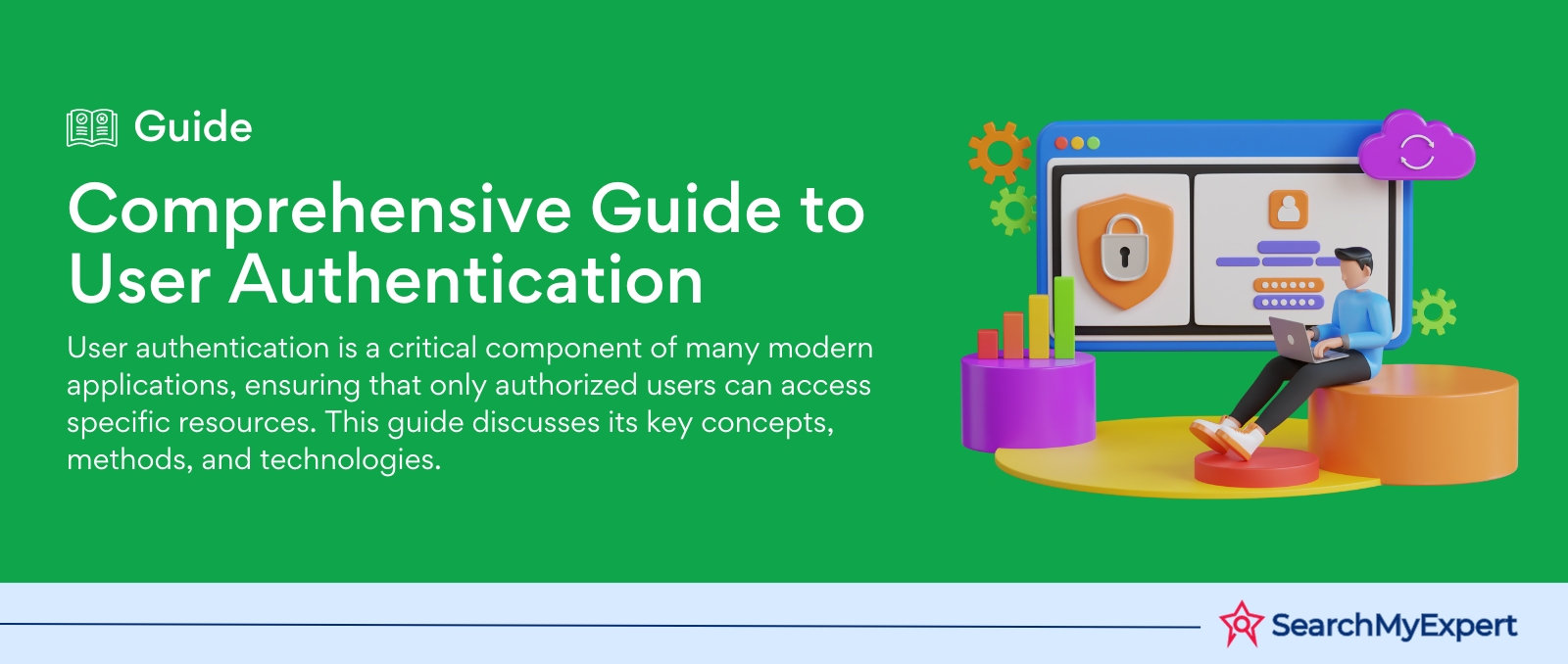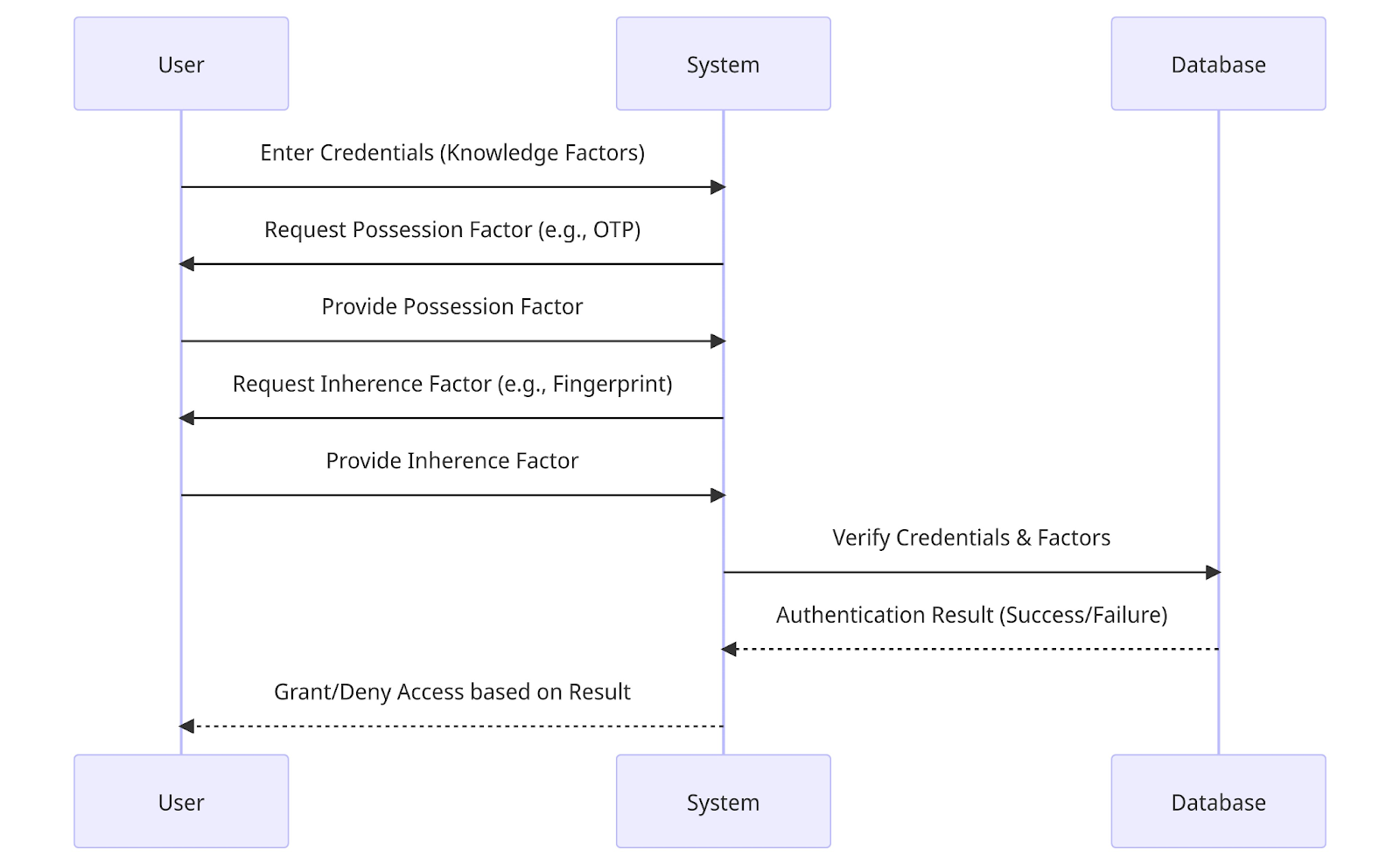Hey there, awesome visitor! 👋 Our website is currently undergoing some nifty upgrades to serve you even better. But don't worry, we'll be back before you can say "SearchMyExpert rocks!"

User authentication plays a pivotal role in safeguarding digital assets and ensuring that only legitimate users can gain access to systems, applications, and other computing resources. This article offers an in-depth exploration of user authentication, its significance, methodologies, and its modern-day implications.
Understanding User Authentication
User authentication serves as the bridge between human users and digital systems, validating a user's identity by corroborating their credentials. Its primary objective is to safeguard against unauthorized access, which could lead to data breaches, system malfunctions, or other security threats.
Definition: User authentication is the process by which a system confirms the identity of a user seeking access. This is achieved by cross-referencing provided credentials against a stored set of approved access criteria.
The Essence of User Authentication
While machines have their own authentication mechanisms, human-to-machine authentication remains vital in most digital interactions, except for those involving guest or auto-login accounts. The essence of user authentication encompasses three primary tasks:
- Identification: Where users declare their identity.
- Authentication: Where users substantiate their claimed identity.
- Authorization: Where users verify they have the requisite permissions for their intended actions.
Methods of User Authentication
Various techniques have evolved to authenticate users, ranging from simple password prompts to sophisticated biometric systems. These can be categorized into distinct factors:
1. Knowledge Factors
This encompasses everything a user must remember to gain system access. Typical examples include:
- Usernames
- Passwords
- Personal Identification Numbers (PINs)
2. Possession Factors
These involve tangible items that a user must have to be authenticated, such as:
- One-time password tokens
- Key fobs
- Smartphone applications
- Employee ID cards
3. Inherence Factors
These are biometric measures inherent to an individual. They include:
- Retina scans
- Fingerprint recognition
- Facial recognition
- Voice-based authentication
4. Location and Time Factors
These auxiliary factors enhance security by considering the spatial and temporal context of the user:
- Location factors: Utilize GPS, Wi-Fi, or cell tower triangulation to verify a user's geographical presence.
- Time factors: Assess the temporal validity of a login attempt, denying access if the timing seems anomalous.
Levels of Authentication: SFA vs. MFA
Authentication systems can be differentiated based on the number of factors they employ:
- Single-Factor Authentication (SFA): This method relies on a singular factor, such as a password. Its simplicity can sometimes be its Achilles' heel, especially when credentials are compromised.
- Multifactor Authentication (MFA): A more robust approach, MFA uses multiple methods to authenticate a user. The common forms are Two-Factor Authentication (2FA) and Four-Factor Authentication (4FA), which utilize two and four distinct factors, respectively.
Challenges and Modern Solutions in User Authentication
While authentication systems strive for utmost security, they are not infallible. Certain methods, like passwords, are particularly susceptible to breaches. To counteract vulnerabilities:
- Strong Password Protocols: Industries are adopting stringent password guidelines, emphasizing length, complexity, and periodic changes.
- Harnessing the Cloud: With the ubiquity of cloud computing, cloud-based services offer another layer of protection, serving as a secondary authentication line in cases of password breaches.
Balancing Security and User Experience: While added layers of security are beneficial, it's essential to ensure that users aren't overwhelmed. Automated MFA processes, for example, can elevate security without impeding the user experience.
This diagram shows the User Authentication Process:

Emerging Trends in User Authentication
As we delve deeper into the digital era, the landscape of user authentication continues to metamorphose, adapting to the ever-changing threats and harnessing the benefits of technological innovations. Let's explore some of the emerging trends and methodologies shaping the future of user authentication.
1. Adaptive Authentication
Adaptive authentication, sometimes known as risk-based authentication, is a dynamic method that adjusts the authentication processes based on a user's behavior. For instance, if a user attempts to log in from an unfamiliar location or device, the system might require additional verification steps.
2. Behavioral Biometrics
Beyond the traditional biometric measures like fingerprints and facial scans, behavioral biometrics analyzes patterns in user behavior. This might include keystroke dynamics, mouse movement patterns, or even the way one swipes on a touchscreen.
3. Continuous Authentication
In this approach, the system constantly monitors and authenticates users during their entire session. If any anomalous behavior is detected, the system can prompt re-authentication or terminate the session.
4. Decentralized Authentication
Leveraging blockchain technology, decentralized authentication eliminates the need for centralized password databases. Instead, it uses cryptographic proofs and distributed ledgers, significantly reducing vulnerability to massive data breaches.
5. Passwordless Authentication
As the name suggests, this method eliminates the need for users to remember complex passwords. Instead, it relies on other factors like biometrics or hardware tokens, ensuring a smoother user experience without compromising security.
The Role of Artificial Intelligence (AI) in User Authentication
Artificial intelligence is playing a pivotal role in enhancing and refining user authentication methods. AI algorithms, equipped with machine learning capabilities, can:
- Detect Anomalies: By analyzing vast datasets, AI can quickly identify patterns and flag irregularities, helping preempt potential security threats.
- Predict Threats: AI systems can predict future threats based on historical data, enabling proactive measures.
- Automate Responses: In the event of a security incident, AI can automate responses, swiftly locking down systems or initiating countermeasures.
The Future of User Authentication: A Glimpse into Tomorrow
Navigating the digital ecosystem, it becomes evident that the demarcation lines between humans and technology are becoming increasingly blurred. As technology keeps advancing, so does the need for fortified user authentication methods. Delving further into the horizon, here are some projections and anticipations for the future of user authentication.
1. Quantum Computing and Authentication
Quantum computers, with their unparalleled processing capabilities, pose both challenges and opportunities for user authentication. On one hand, they can potentially crack many of the cryptographic methods currently in use. On the other, they pave the way for quantum encryption – a seemingly unbreakable encryption method based on the principles of quantum mechanics.
2. Multi-Modal Biometrics
Instead of relying on a single biometric measure, future systems might integrate multiple biometric modalities for authentication. This could include a combination of facial recognition, voice patterns, and even gait analysis, offering a more comprehensive authentication profile of an individual.
3. Embedded Authentication
As the Internet of Things (IoT) continues to grow, embedded authentication will become pivotal. Devices will have built-in authentication mechanisms, enabling them to participate in a secure network without needing constant human intervention.
4. Geospatial Authentication
This method would use geospatial data, not just to verify a user's current location, but also to predict and analyze their typical routes and patterns. Any deviation from the usual might trigger additional authentication layers.
5. Emotion-Based Authentication
Harnessing advancements in AI and machine learning, future systems might be able to analyze users' emotional states for authentication. By recognizing micro-expressions, voice tonalities, or even heart rates, these systems could determine a user's emotional consistency during authentication.
Integrating Ethics into User Authentication
While technological advancements promise heightened security, they also raise ethical concerns. The use of biometrics, continuous surveillance, and emotion analysis could potentially infringe on individuals' privacy rights. It's essential for the industry to strike a balance between innovative authentication methods and preserving individual privacy.
Regulations and Standardization
As authentication methods evolve, so will the need for universal standards and regulations. These standards will ensure interoperability across different platforms and regions. Moreover, they'll provide guidelines on ethical implementations, ensuring that user rights aren't compromised.
Final Thoughts
The realm of user authentication is at an exciting juncture. With the integration of advanced technologies and novel approaches, the future promises even more secure yet user-friendly authentication mechanisms. As cyber threats grow in complexity, the industry's commitment to staying one step ahead remains unwavering, ensuring that user data and digital assets continue to be safeguarded with the utmost diligence.
Transform your app idea with the best
Mobile App Developers in the industry.
Other Related Blogs


Mastering Docker for App Development: A Comprehensive Guide to Benefits, Use-Cases, and Alternatives

STAY UP TO DATE
GET PATH'S LATEST
Receive bi-weekly updates from the SME, and get a heads up on upcoming events.
Contact Us
We will get back to you as soon as possible.
Please try again later.


Find The Right Agencies
SearchMyExpert is a B2B Marketplace for finding agencies. We help you to describe your needs, meet verified agencies, and hire the best one.
Get In Touch
WZ-113, 1st Floor, Opp. Metro Pillar No- 483, Subhash Nagar - New Delhi 110018
About Us
For Agencies
Benefits Of Listing With Us
Submit An Agency
Agency Selection Criteria
Sponsorship
For Businesses
Agencies Categories
Trends Articles
FAQs
Find The Right Agencies
SearchMyExpert is a B2B Marketplace for finding agencies. We help you to describe your needs, meet verified agencies, and hire the best one.
About Us
For Agencies
List Your Agency
Benefits Of Listing
Agency Selection Criteria
Sponsorship
Get In Touch
WZ-113, 1st Floor, Opp. Metro Pillar No- 483, Subhash Nagar - New Delhi 110018
contact@searchmyexpert.com
Copyright © 2023 · Skillpod Private Limited · All Rights Reserved - Terms of Use - Privacy Policy







